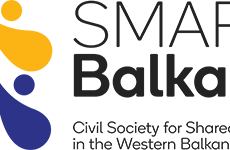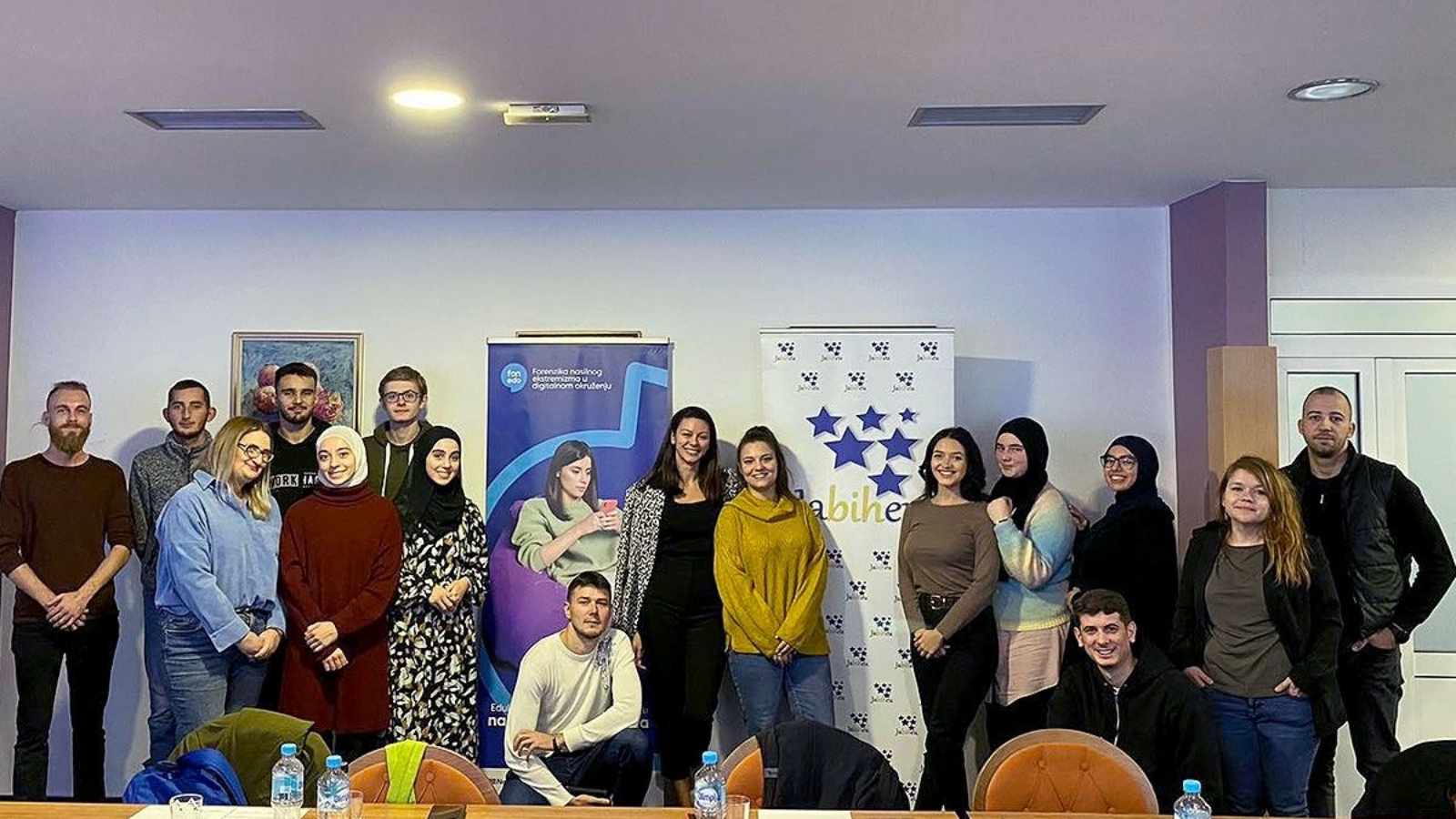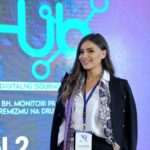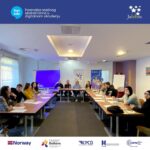The “Forensics of Violent Extremism in the Digital Environment” project for the first time brings together youth, civil society organizations, media and fact checkers, to identify digital/online content that encourages violent extremism.
One of a series of trainings on “Forensics of violent extremism in a digital environment” took place in Mostar in the NGO “Ja bih u EU” organization, on November 9th. During the trainings, young people worked with experts to develop their knowledge and skills in identifying violent extremism in the digital environment. They also worked to strengthen their ability to take on roles in the process of researching, identifying, exposing, and opposing cases of violent extremism in the digital sphere.
For the first time, young people media, civil society organizations, and fact checkers collaborate on the “Forensics of Violent Extremism in a Digital Environment” project to identify digital/online content that encourages violent extremism and tracks down the intentions of those who create it. Project was supported by the “SMART Balkans – Civil Society for Shared Society in the Western Balkans” implemented by Centar za promociju civilnog društva (CPCD), Center for Research and Policy Making (CRPM) and Institute for Democracy and Mediation (IDM) and financially supported by the Norwegian Ministry of Foreign Affairs (NMFA).
Ines Bulajić, a youth communication consultant, defined the radicalized behaviors and formulations that lead to violent extremism. She also discussed the social value distortion and division that lead to violent extremism with a special focus on the Bosnian and Herzegovina context.
“This was a great opportunity to talk about identities and the role that their understanding has in the potential radicalization of young people towards violent extremism and terrorism. It was very important for young people to talk about stereotypes, prejudices and discrimination as basic obstacles to intercultural dialogue and building peace in their local environment”, said expert Bulajić.
Anida Sokol, editor and researcher at “Media Center Sarajevo” discussed the language of hate in comments on social media and in the media during her talk and interactive work with young people. She pointed out that there is a thin line that separates hate speech from actual physical violence. Emir Zulejhić, editor and researcher of “Raskrinkavanje”, talked about identifying and confirming the accuracy of problematic content on social networks and in the media.
“Given the amount of misinformation, various manipulations and hate speech, it is very important to have practical skills to navigate the online space. To begin with, the participants were introduced to fact-checking organizations in the region, which can suffice as credible sources when looking for answers to the question of whether some information is correct. If they want to investigate the origin, accuracy, authenticity, or broader context of the information they come across, they have acquired the knowledge and skills that will enable them to do so. They are familiar with advanced search of social networks and the Internet in general, as well as with tools for analyzing photos and videos, which will help them in this”, says researcher and editor Zulejhić.
Cyber security expert Branko Petrović spoke about harmful online content that leads to violent extremism, as well as legal, regulatory, and self-regulatory frameworks to combat this type of online content, as well as the culture of violence and cyberspace protection.
“At the workshop, we primarily went through the working method when it comes to digital forensics. We adopted six simple steps of digital forensics and learned how to create a digital forensic report. After that, we focused on uncovering the motives and identity of the source (owner) of the portal, that is, the media that spread hate speech and false information, thereby contributing to the creation of violent extremism in the digital environment. Through a practical exercise, we showed which tools can be used to reveal the identity of media owners and content creators who encourage violent extremism in the digital environment. Likewise, through a real example, we went through some questions that reveal the motive of the activity of a media outlet”, concluded expert Petrović.
Young people are especially exposed to hate speech on the Internet, as it is their primary source of information, and they take in and share things that leads to violent extremism without thinking critically. According to research conducted in the digital and social media sphere, there has been an alarming surge in hate speech, aggressive behavior, misogynistic attacks, and disinformation created to lead to the emergence of violent extremism in Bosnia and Herzegovina.
“By participating in the workshop on the forensics of violent extremism in a digital environment, we gained new knowledge and skills to face the challenges of modern times. Together, we explored ways to improve our digital security”, said Dino Gluhović, a training participant.
Prior studies before the “Forensics of violent extremism in the digital environment” project showed that the majority of young people are unaware of the requirements for using social networks and are unable to comprehend online algorithms. This is among the main causes of the narratives of violent extremism that young people in Bosnia and Herzegovina are exposed to. Many young people lack the opportunity to gain media literacy skills and are unable to distinguish between content that is “inflammatory” and leads to violent extremism and confirmed facts. For this reason, both the ability to identify violent extremism and the means of combating it mainly depend on trainings such as this one.











